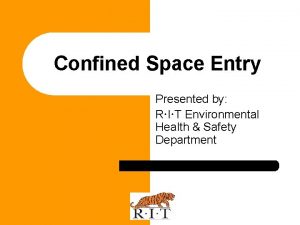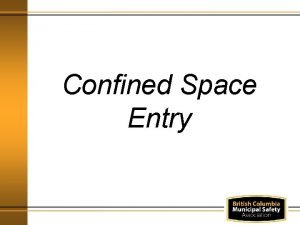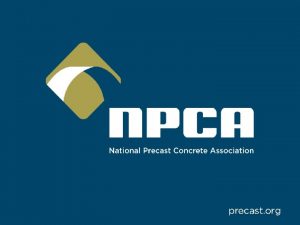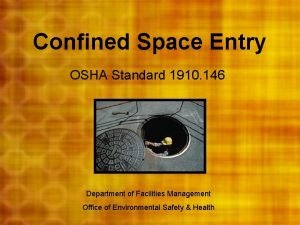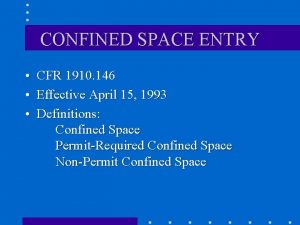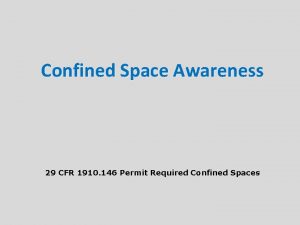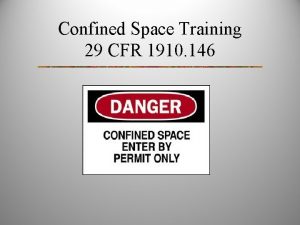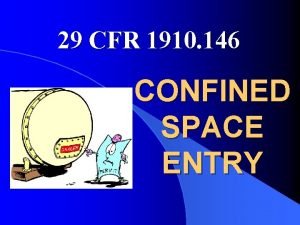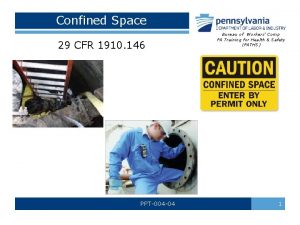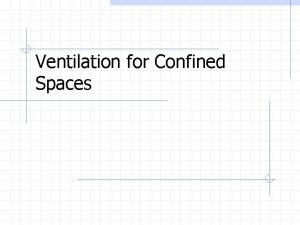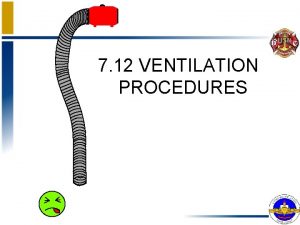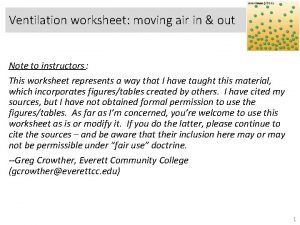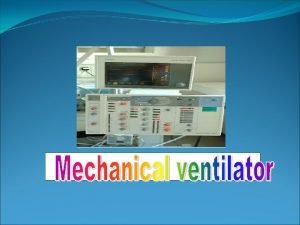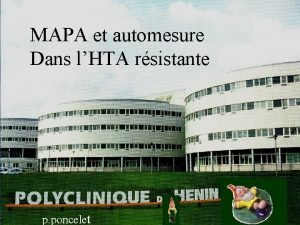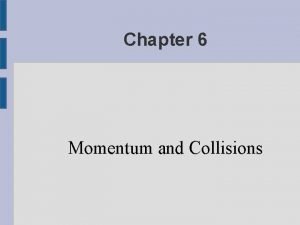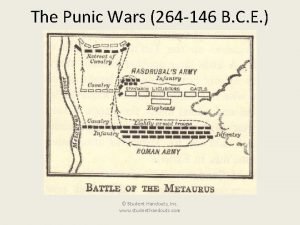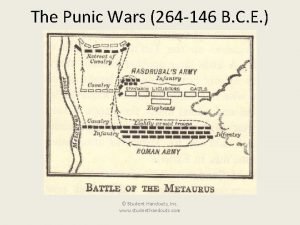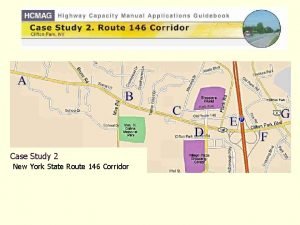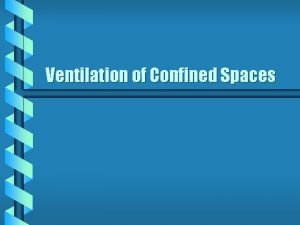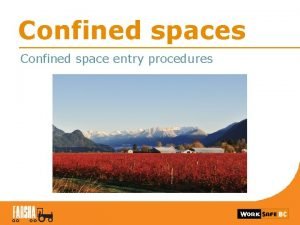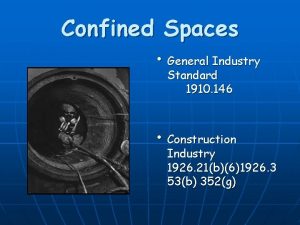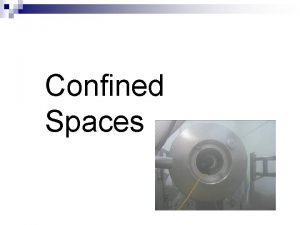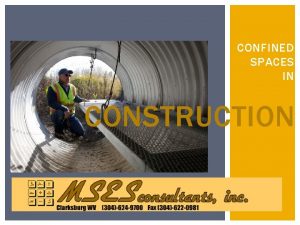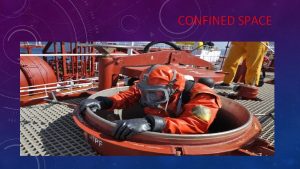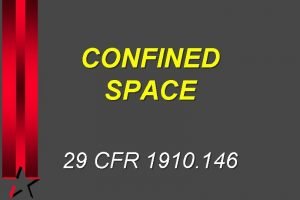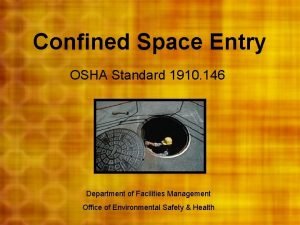Ventilation for Confined Spaces 1910 146 requires ventilation

















- Slides: 17

Ventilation for Confined Spaces

1910. 146 requires ventilation as follows: An employee may not enter the space until the forced air ventilation has eliminated any hazardous atmosphere The forced air ventilation shall be so directed as to ventilate the immediate areas where an employee is or will be present within the space and shall continue until all employees have left the space.

The air supply for the forced air ventilation shall be from a clean source and may not increase the hazards in the space.

The atmosphere within the space shall be periodically tested as necessary to ensure that the continuous forced air ventilation is preventing the accumulation of a hazardous atmosphere.

Types of Ventilation Natural ventilation Mechanical supply ventilation (positive pressure) Mechanical exhausting (negative pressure)

Natural Ventilation Natural air currents Advantages n n Quiet Does not require power Not a source of ignition Maintenance free Disadvantages n n Highly unpredictable Very inefficient

Mechanical Supply Forcing fresh air in / contaminated air out Should be at a minimum rate of 20 air changes per hour Advantages n n n Very effective in managing hazards Eliminates gas seeping back into the space Prevents flammable gas from being drawn across the fan motor Disadvantages n n Fan noise Stirring up dust

Mechanical Exhausting Pulls contaminated air out / draws fresh air in Works best when air intake is close to work area Advantages n Pulls heavier than air contaminates from low areas Disadvantages n n May not create sufficient air movement Fan noise May draw flammable gases across the fan motor Supply ventilation can force air into the space 30 x the distance exhaust can draw it

Ventilation Factors Job details n n n Atmospheric hazard Size of space Contaminants density How fast its created How much space is available for vent. Equipment Airflow required n 20 air changes per hour Volume required

Ventilation Factors Breeze to ensure comfort Duct friction loss n Can reduce air flow over 50% in 15 foot of duct Fan performance n Design, Weight, Sound, Power

Supply Ventilation Directions Position fan 4 -6 feet from entry with intake into wind Vertical spaces n Position hose ¾ of the distance to the bottom, and no more than 15 feet from the work area Horizontal spaces n Lay hose on the floor with the end within 10 feet of the far wall Turn fan on before placing duct into the space Ensure that there is no “short circuiting”

Exhaust Ventilation Directions Keep the duct 3 feet from the worker Position duct 1 foot from contaminant and 1 foot below the worker breathing zone Position so exhaust is out of wind and exhausted air is not pulled back into space If explosive, do not allow air to contact fan motor. Unit should be grounded Area around fan should be considered hazardous

In all Cases Ventilation should continue while space is occupied Prevent recirculation of exhaust air If LEL reading is present, remove hose before the fan is turned off

Lighter Than Air Gases

Heavier Than Air Gases

Special Situations

Below Grade Conditions
 Confined spaces
Confined spaces Confined spaces
Confined spaces Confined spaces
Confined spaces 1910-146
1910-146 Confined space 1910
Confined space 1910 1910-146
1910-146 1910 146
1910 146 1910-146
1910-146 Osha confined space training powerpoint
Osha confined space training powerpoint What gas is heavier than air
What gas is heavier than air Confined space ventilation calculation
Confined space ventilation calculation Confined space ventilation calculation worksheet
Confined space ventilation calculation worksheet Mode of ventilation
Mode of ventilation 146/79 blood pressure
146/79 blood pressure A deer with a mass of 146 kg
A deer with a mass of 146 kg 146 bce
146 bce 146 bce
146 bce Route 146 drive in
Route 146 drive in
